Wai-CooP
Full Title
Web Accessibility Initiative – Communities of PracticeDescription
Web Accessibility Initiative – Communities of Practice (WAI-CooP) provides a unique model to support implementation of the international standards for digital accessibility, including the W3C Web Content Accessibility Guidelines (WCAG) and the EN 301 549.
WAI-CooP objectives are to:
• Establish vendor-neutral overview on available training, tools, and resources internationally;
• Analyse technological advancements and coordinate with relevant research and development;
• Provide opportunities for key stakeholders to share resources and to exchange best practices.
WAI-CooP achieves this by building on the existing wealth of authoritative guidance available from the W3C Web Accessibility Initiative (WAI), to provide a one-stop shop for the broad spectrum of key stakeholders involved in the implementation of digital accessibility, including public bodies and private entities; organisations representing people with disabilities; product, service and training providers; researchers; and policy makers.
WAI-CooP is uniquely positioned to establish necessary dialogs with key stakeholders to help exchange best practices in the community, provide technical clarification and guidance, and refine the authoritative guidance from W3C. WAI-CooP is also uniquely positioned and qualified to help ensure coordination and harmonisation of accessibility standards and practices, raise awareness and build technical capacities in Europe and internationally.
WAI-CooP maximises its impact by utilising transparent and open processes of the W3C to invite all key stakeholders, and by integrating project results into relevant W3C standardisation and EDF networks, to ensure longer-term sustainability beyond the project. WAI-CooP provides direct support for European Union (EU) public bodies in the process of implementing the Web Accessibility Directive (WAD), while using a non-exclusive approach that benefits organisations and governments internationally wanting to implement digital accessibility.
